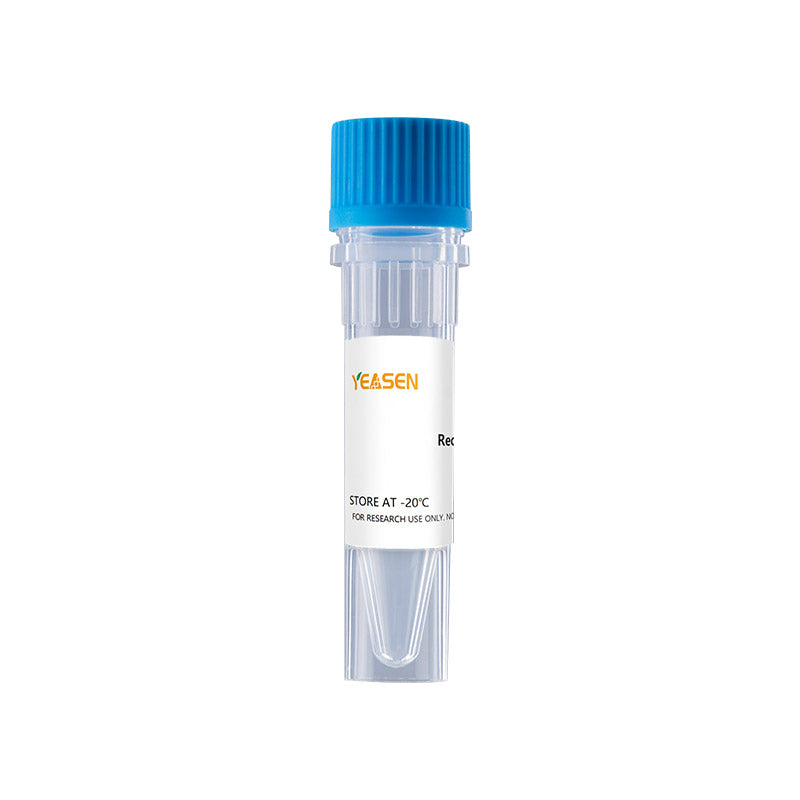Description
Both MIP-1α and MIP-1β are structurally and functionally related CC chemokines. They participate in host response to invading bacterial, viral, parasite and fungal pathogens by regulating the trafficking and activation state of selected subgroups of inflammatory cells (e.g. macrophages, lymphocytes and NK cells). While both MIP-1α and MIP-1β exert similar effects on monocytes, their effect on lymphocytes differ; with MIP-1α selectively attracting CD8+ lymphocytes, and MIP-1β selectively attracting CD4+ lymphocytes. Additionally, MIP-1α and MIP-1β have also been shown to be potent chemoattractants for B cells, eosinophils and dendritic cells. Both human and murine MIP-1α and MIP-1β are active on human and murine hematopoietic cells. Recombinant Murine MIP-1α is a 8.4 kDa protein containing 69 amino acid residues, including the four highly conserved cysteine residues present in CC chemokines.
Product Properties
|
Synonyms |
Macrophage Inflammatory Protein-1 alpha, CCL3, LD78 alpha |
|
Accession |
P10855 |
|
GeneID |
20302 |
|
Source |
E.coli-derived Mouse MIP-1α protein,His24-Pro92. |
|
Molecular Weight |
Approximately 8.4kDa. |
|
AA Sequence |
APYGADTPTA CCFSYSRKIP RQFIVDYFET SSLCSQPGVI FLTKRNRQIC ADSKETWVQE YITDLELNA |
|
Tag |
None |
|
Physical Appearance |
Sterile Filtered White lyophilized (freeze-dried) powder. |
|
Purity |
> 98% by SDS-PAGE and HPLC analyses |
|
Biological Activity |
Fully biologically active when compared to standard. The biological activity determined by a chemotaxis bioassay using purified eosinophils is in a concentration range of 0.1-1.0 μg/mL. |
|
Endotoxin |
<1 EU/μg of protein as determined by LAL method. |
|
Formulation |
Lyophilized from a 0.2 μm filtered concentrated solution in 30 % Acetonitrile and 0.1 % TFA. |
|
Reconstitution |
We recommend that this vial be briefly centrifuged prior to opening to bring the contents to the bottom. Reconstitute in sterile distilled water or aqueous buffer containing 0.1% BSA to a concentration of 0.1-1.0 mg/mL. Stock solutions should be apportioned into working aliquots and stored at ≤ -20°C. Further dilutions should be made in appropriate buffered solutions. |
Shipping and Storage
The products are shipped with ice pack and can be stored at -20℃ to -80℃ for 1 year.
Recommend to aliquot the protein into smaller quantities when first used and avoid repeated freeze-thaw cycles.
Cautions
1. Avoid repeated freeze-thaw cycles
2. For your safety and health, please wear lab coats and disposable gloves for operation.
3. For research use only.
Payment & Security
Your payment information is processed securely. We do not store credit card details nor have access to your credit card information.
Inquiry
You may also like
FAQ
The product is for research purposes only and is not intended for therapeutic or diagnostic use in humans or animals. Products and content are protected by patents, trademarks, and copyrights owned by Yeasen Biotechnology. Trademark symbols indicate the country of origin, not necessarily registration in all regions.
Certain applications may require additional third-party intellectual property rights.
Yeasen is dedicated to ethical science, believing our research should address critical questions while ensuring safety and ethical standards.

